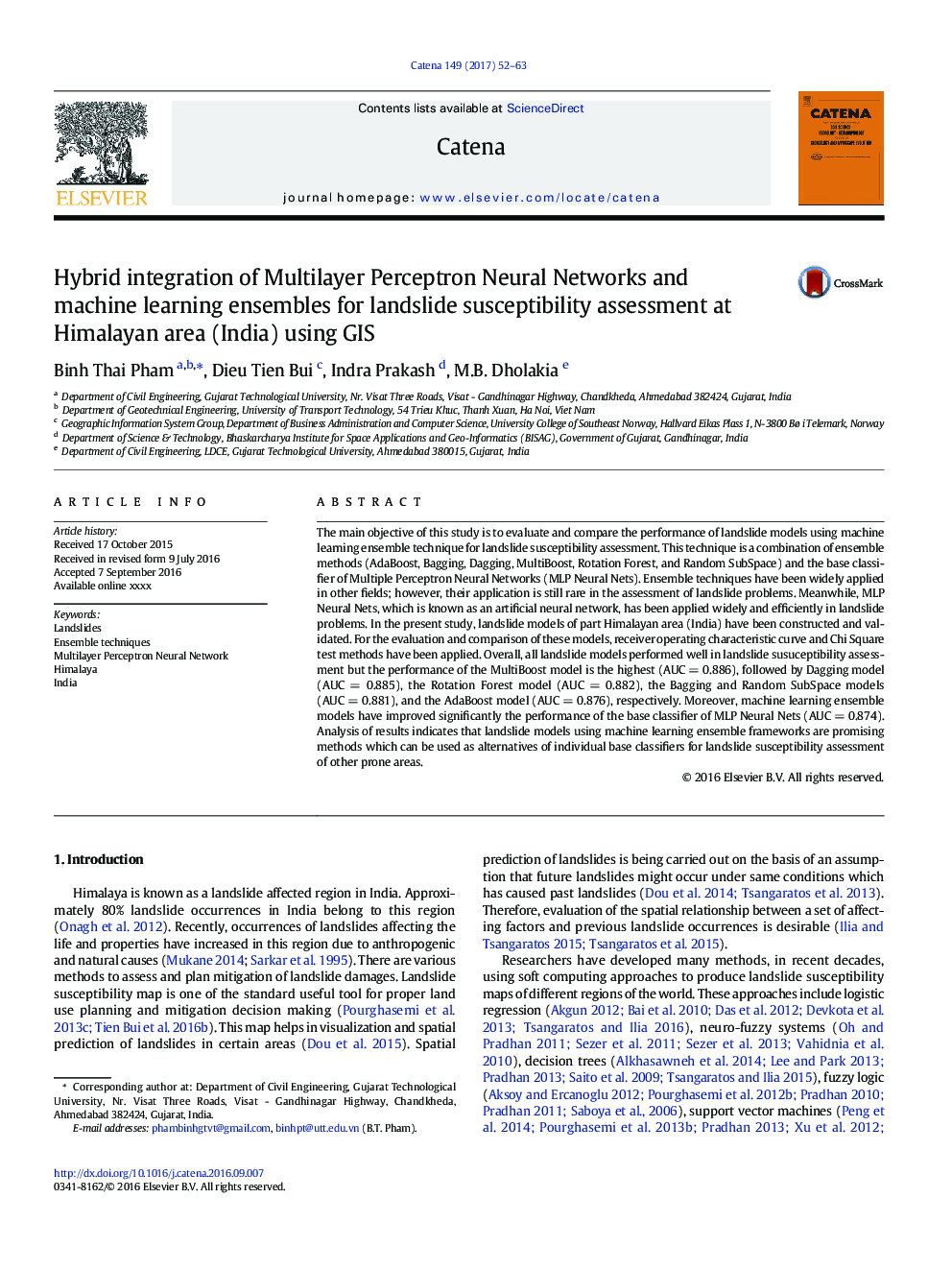| Article ID | Journal | Published Year | Pages | File Type |
|---|---|---|---|---|
| 4570847 | CATENA | 2017 | 12 Pages |
•Machine learning ensemble frameworks have been compared for landslide modeling.•Machine learning ensemble frameworks have improved the performance of base classifier.•MultiBoost is the most effective ensemble compared to others.
The main objective of this study is to evaluate and compare the performance of landslide models using machine learning ensemble technique for landslide susceptibility assessment. This technique is a combination of ensemble methods (AdaBoost, Bagging, Dagging, MultiBoost, Rotation Forest, and Random SubSpace) and the base classifier of Multiple Perceptron Neural Networks (MLP Neural Nets). Ensemble techniques have been widely applied in other fields; however, their application is still rare in the assessment of landslide problems. Meanwhile, MLP Neural Nets, which is known as an artificial neural network, has been applied widely and efficiently in landslide problems. In the present study, landslide models of part Himalayan area (India) have been constructed and validated. For the evaluation and comparison of these models, receiver operating characteristic curve and Chi Square test methods have been applied. Overall, all landslide models performed well in landslide susuceptibility assessment but the performance of the MultiBoost model is the highest (AUC = 0.886), followed by Dagging model (AUC = 0.885), the Rotation Forest model (AUC = 0.882), the Bagging and Random SubSpace models (AUC = 0.881), and the AdaBoost model (AUC = 0.876), respectively. Moreover, machine learning ensemble models have improved significantly the performance of the base classifier of MLP Neural Nets (AUC = 0.874). Analysis of results indicates that landslide models using machine learning ensemble frameworks are promising methods which can be used as alternatives of individual base classifiers for landslide susceptibility assessment of other prone areas.
